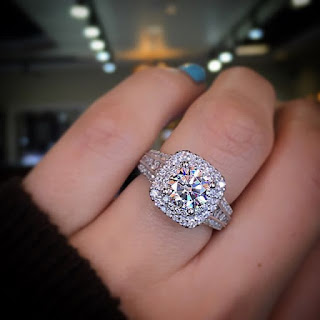There was clearly a certain amount of reporting from the public press and also from the on-line world recently that inexpensive pieces of fashion jewelry might be damaging to ladies' skin.
A short while ago various tabloids were following stories that said cheap jewellery might cause rashes as well as other epidermis problems for the people who wear them.
Exactly how could you be 100% certain that any jewelry you obtain is definitely of a good quality and won't be the cause of these reported skin complaints?
If you're the type of person to visit a main street or high street retail store, you'll be able to make physically make contact with and feel the jewellery to assess the product quality, not to mention being able to try it on to see how it feels.
However, should you be shopping on the internet for fashion jewelry, you are unable to make this happen.
When you're an on-line shopper you're particularly restricted with how you can determine whether the products or items happen to be of excellent craftsmanship. However if you follow these simple pointers, your online purchasing anguish will be eased.
Some of the ways it may just be possible to figure this out are, firstly make sure that the web site retails "nickel free" jewellery. Seeing that nickel can be a constituent that has been referred to recently as being a factor which can be attributed to triggering skin irritations amongst a number of wearers, this therefore makes sense.
Next hunt for customer critiques and reviews. In the event a previous shopper has experienced issues with a piece of jewellery it follows that so will you.
In addition look for contact details of the site. In the event that there are none then there is also a good possibility that they may very well be offering second-rate items and don't want to make it easy for people to contact them should they have problems.
Finally for anyone who is still in doubt look at the web-site's returns policy. They should plainly declare that in the event the jewelry is just not fit for purpose you may send it back to them to get a refund.
Check out product images. Badly developed pictures that display the products badly generally means a low quality product.
However despite performing each one of these checks you are unable to be sure that any jewelry bought online is going to be of an excellent level of quality and still not trigger any sort of dermis problems.
In that case, some of the best advice I can offer will be to buy a recognized and highly regarded make of fashion jewellery such as Danon.
Danon Jewellery has been hand crafted by the Danon family at their factories' situated in Israel ever since the mid 70's.
Last but not least, because an on line retailer promotes "cheap jewelry" it doesn't imply that the jewelry is junk. In the present financial state most people are trying to find a good deal and stores are attempting to encourage shoppers to spend just as much as they can. Remember fondly both of these old yet wise sayings; "buy cheap buy twice" as well as "you get what you pay for". Both these are very appropriate with regards to shopping for jewelry.
With these import points in mind, you can shop on the net for jewelry feeling somewhat more self-confident of the fact that the items you buy may not cause you skin issues.
Article Source: http://EzineArticles.com/7006948




